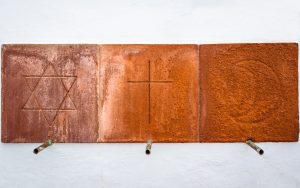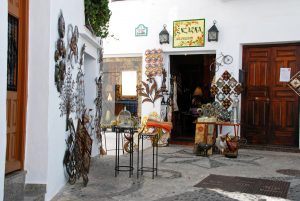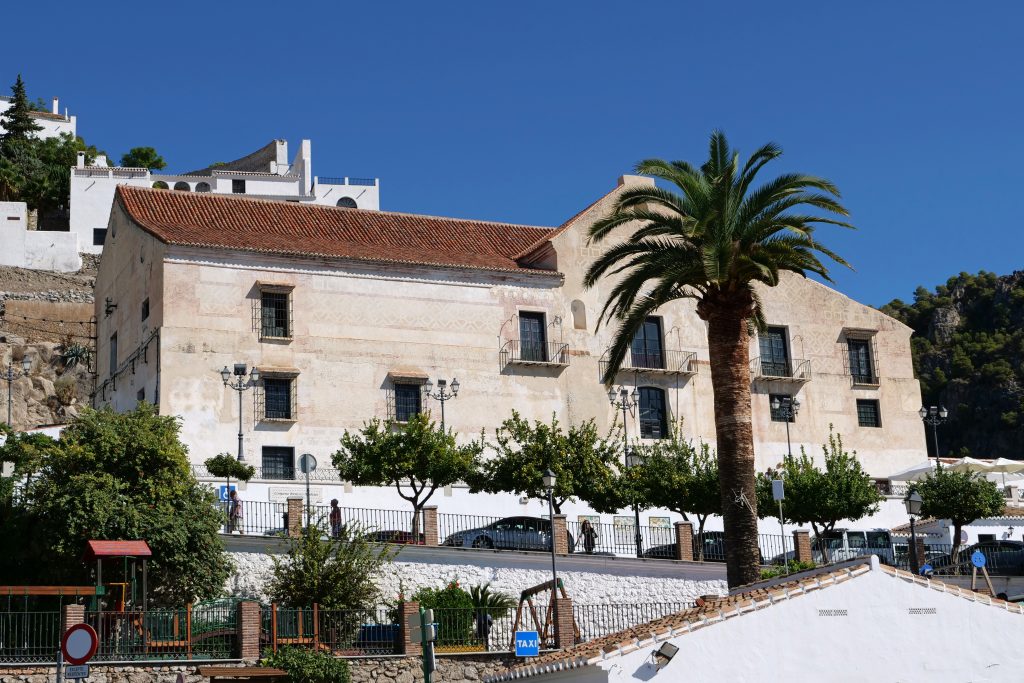Frigiliana has been named the most beautiful white village in Andalusia by countless guides and websites. With its narrow, steep and well-groomed streets, this village is certainly a sight to behold and also very interesting from a historical point of view.
In normal times, the village is very touristy and the municipality would like to keep it that way. According to a municipal ordinance, residents must whitewash their facades every year. Subtly placed flower boxes and plant pots offer extremely photogenic and typically Andalucian views.
As in other villages in the area, in Frigiliana you’ll find mosaic plates attached to facades here and there, where you can read more (in Spanish) about the local history. The village has been a great attraction for artistic types and foreigners for decades.
More than a third of the population is of non-Spanish descent. This mixture of nationalities results in nice souvenir shops, galleries and boutiques and of course many bars to have a drink.
Three cultures
This reference to other cultures dates back to when three religions once lived together here without too much hassle. A fact that in 2021 is nice to realise and can be seen in the coat of arms of Frigiliana. It shows the Arabs crescent moon, the Jewish Star of David and the Christian cross.

An annual ‘Tres Culturas’ festival celebrates the three cultures. Stalls line the streets, visitors can follow a ‘ruta de tapas’ and live music and performances keep the party going until the early hours.
Sugar syrup
When entering the village from Nerja you see a large building. This has housed the cane sugar factory El Ingenio Nuestra Señora del Carmen (Mieldelatorre.com) since 1720. It is the only working cane sugar syrup factory in Europe where the syrup is still made in the traditional way, without additives. They also grow cane sugar next to the factory.
This used to happen all along the coast of the province of Málaga. That is why the coast had Costa Cañera as its nickname (the cane sugar coast). The syrup can still be found in countless dishes in southern Spanish cuisine. Examples are as ‘berenjenas con miel’ (aubergines with syrup) or a typical dish from Frigiliana ‘miel coliflor’ (cauliflower with syrup).
On the last Sunday in April, the village celebrates the Día de la Miel de Caña. You can taste the molasses and visit the factory, where everything is as it was a few centuries ago.




